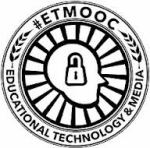After dabbling with digital storytelling last week as part of the work I’m doing as a learner in #etmooc, the Education Technology and Media MOOC (Massive Open Online Course) organized by University of Regina professor of educational and media Alec Couros and several “co-conspirators,” I circled back on the theme in a more focused and serious way. And found myself in far deeper emotional waters than expected—as is often the case with any completely engaging learning experience.
 Couros and his colleagues have offered us choices among eight different digital storytelling challenges ranging from simple acts (writing a six-word story and combining it with an emotionally engaging image) to an “ultimate challenge”: “Write a story, and then tell that same story digitally using any number of digital tools and freely available media! For inspiration and story creation guidance, see Alan Levine’s 50+ Web 2.0 Ways to Tell a Story.”
Couros and his colleagues have offered us choices among eight different digital storytelling challenges ranging from simple acts (writing a six-word story and combining it with an emotionally engaging image) to an “ultimate challenge”: “Write a story, and then tell that same story digitally using any number of digital tools and freely available media! For inspiration and story creation guidance, see Alan Levine’s 50+ Web 2.0 Ways to Tell a Story.”
Starting simply, I tackled the six-word stories; saw the emotional depth others were achieving; and went back to the drawing board until I found one that promised to carry me into the level of exploration others had achieved: “Through stories, our departed remain alive.”
One of the departed who remain alive for me is David Moebs, who died from AIDS-related complications in June 1998, yet remains amazingly present. He was a person whose understated generosity made a substantial difference to his friends during his lifetime: at least three different times, he gave substantial amounts of money to friends in need, knowing that the money, if used wisely, would make life-changing differences for them. He had no expectation of receiving anything in return; he simply wanted to take action at the right moment, with people he perceived to be the right people.
It was not a complete surprise to me, therefore, that when I wrote about his spirit of volunteerism and generosity and posted the article online (more than a decade after he left us, in a rudimentary form of digital storytelling long before I ever heard the term), it touched a few people who still carried strong, positive memories that were rooted in his actions.
I was, in preparation for the #etmooc digital storytelling assignment, already going back to unpublished writing I had completed about David. I was also trying to find the appropriate way and tools to give new life to an old story. Video still felt a little beyond me; blogging felt as if it wouldn’t force me to stretch in ways the assignment was designed to make all of us as learners stretch. So I started looking for tools I hadn’t yet explored—Prezi and Vuvox among them—to see if I could revisit David’s story in my ongoing role as a learner. My starting point was to storyboard the effort using PowerPoint: I actually completed a draft that placed the script into the notes field of each slide; incorporated images licensed through Creative Commons and posted on flickr; began moving the images into Prezi and Vuvox; and recorded the script using Audacity.
That’s when I hit the sort of glitch we expect to find while learning: Vuvox wasn’t cooperating, and Prezi didn’t want to take the audio files in the format that Audacity produced and stored them. I did find an online service that would, for a fee, have transformed the recordings into a format compatible with what I had developed visually in Prezi, but I held myself back with a challenge to either locate a free online tool or find a new way to use existing tools that I already had acquired.
The solution proved simple once I returned to PowerPoint. Using the “sound” function that is under the “insert” tab within the program, I was able to easily re-record the individual elements of the script and insert them into each slide—and even pull in an audio clip from YouTube to pull the story together at a multi-media level.
And while I don’t expect to win any awards for innovations in digital storytelling, the entire exercise not only offered a wonderful opportunity to revisit an old friend, but to benefit further from the learning opportunities that #etmooc is producing at a time when so many of us are exploring what MOOCs are and will continue to offer as part of our overall learning environment.
N.B.: This is the sixth in a series of posts responding to the assignments and explorations fostered through #etmooc. The digital story described in this posting can be viewed online in “Slide Show” mode; to produce the audio, please click on the audio icons on each slide.

